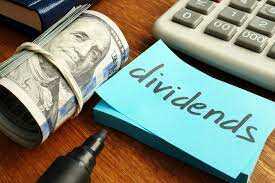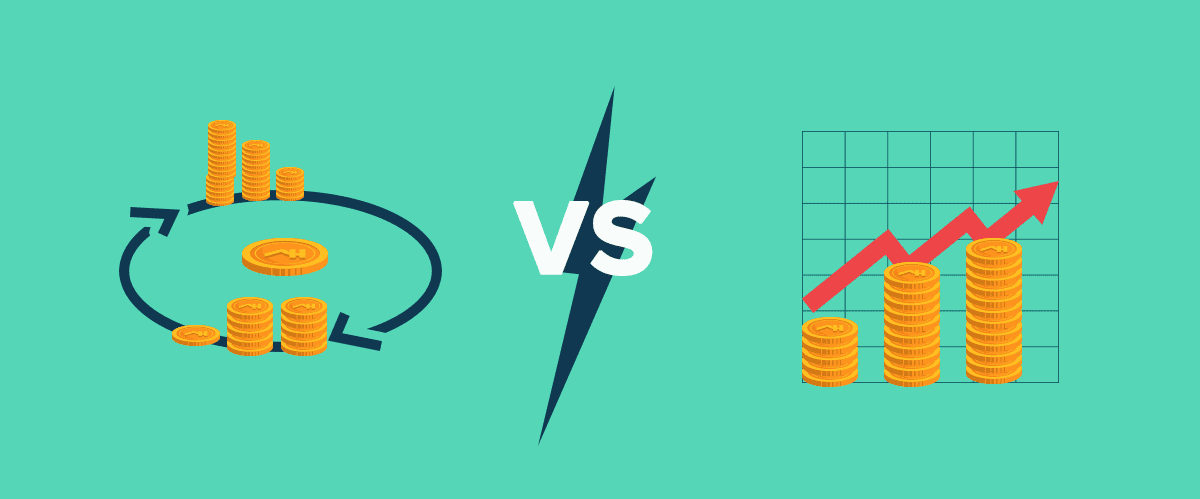Introduction
Most financial advisors agree that reinvesting dividends and taking advantage of compound growth is the best choice for investors. However, it may make sense for investors further along in their investment path to take the cash instead.

What Is Dividend Reinvestment?
Instead of taking the dividend payment in the form of cash, investors might choose to reinvest it in the company by purchasing new shares with it. Some of the following are examples of why reinvesting dividends can be a lucrative business strategy:
Cheap:
You will not be responsible for paying any commissions or other brokerage fees if you choose to have your dividends automatically reinvested. The process is straightforward: dividends are automatically reinvested after it has been established.
Flexible:
Even though most brokers won't let you buy fractional shares, dividend reinvestments make it possible for you to do so. Regular: Whenever you get a dividend, you return some of that money to the corporation. This illustrates how the technique of dollar-cost averaging can be used (DCA). If you choose to reinvest your dividends, the force of compounding can significantly boost the amount of money you make over the long term. Dividends can be used to buy company shares, which can increase those dividends paid out in the future.
How Does Dividend Reinvestment Work?
In actuality, reinvesting dividends needs very little work on the investor's part. When an investor enrolls in a program that allows for automatic dividend reinvestment, often known as a DRIP program, the investor's broker or the business that manages the DRIP program will automatically reinvest the dividend payment in additional shares of the investment that is being tracked. Consequently, the investor will not receive a monetary dividend but additional shares in the company or fund at the then-current market price. If the dividend payment is less than the whole share price, the shareholder can receive a fraction of a share rather than the full share. The fact that these acquisitions almost never include additional commission fees is an advantage.
To make things easier for investors, here is an example of how dividends can be reinvestment. On every 100 shares of stock that they own, a shareholder is entitled to receive a dividend of $1 per quarter. That would result in a payment of $100 to them. However, it is utilized to reinvest in the company's stock because the investor has opted to take part in the automatic dividend investment program offered by the brokerage. If the share price at the time of the dividend payment were $25 per share, this investor would have 104 shares.
This identical investor would receive a dividend payment of $104 for the subsequent quarter. After considering the reinvestment of dividends and assuming the stock was trading at $26, the investor would have 108 shares. This process of wealth accumulation would continue until the investor either sold the stock or turned off the provision that enabled automatic reinvestment of dividends.
How to Reinvest Dividends
A stockholder has two alternatives regarding what to do with dividend payments. Consider dividends to be a form of payment similar to salary. Rather than spending the money, you receive in dividends on something else, consider reinvesting it in the stock you already own. Through dividend reinvestment programs, also known as DRIPs, investors have the option to have their dividends reinvestment in the company's shares rather than having the money deposited directly into their bank accounts. DRIP plans are especially helpful to individual investors with limited financial resources since they make it easier for them to purchase fractional shares of the company. Every company does not provide this benefit. In addition, not all investors will choose to make further investments when they are offered the opportunity. Your personal short-term and long-term monetary goals should serve as the compass points for your decision.

Is It Better To Take Advantage Of Automatic Dividend Reinvestment Or Hold Onto Cash?
Many investors ensure that the growth of their portfolios is maintained by making use of the auto-reinvestment tool that is provided by the majority of brokerages. This allows the investors to reinvest any dividends they have been given back into the stock or fund that has paid them out. On the other hand, some shareholders choose to keep their dividends in a cash form in their brokerage accounts, which gives them the flexibility to use that cash for any reason they see proper.
How You Reinvest Your Dividends Depends On Your Circumstances And Investment Goals.
Dividend growth investing is about getting to where you want to be financial. However, even though reinvesting dividends is a powerful instrument that can speed up the compounding of your income and wealth, this strategy is inappropriate for everyone and does not work in every case. Unanticipated expenses can appear out of nowhere, depleting your financial reserves and requiring you to make do with less money until you get paid again. Suppose you do not have access to any other kinds of income. In that case, you may want to consider replenishing your cash position with dividends to have a sense of financial stability and to be able to sleep comfortably throughout the subsequent bad market.
How To Reinvest Dividends Once You Paid Enough To Purchase A Whole Stock?
The vast majority of dividend reinvestment plans (DRIPs) enable shareholders to reinvest dividends in any amount. Therefore it is irrelevant if the sum doesn't cover the cost of an entire share. If the price of a share is $10, then each dollar of reinvested dividends will allow you to acquire 0.10 additional shares.
Conclusion:
A dividend is a payment made per share by a corporation or fund to its shareholders. You can receive the dividends in the form of cash or reinvest them in either the firm or the fund. When you reinvest your dividends, instead of taking the money in the form of cash, you use it to purchase additional company shares. This is in contrast to cashing out your dividends. It is possible to amass wealth through reinvestment, but this approach is not necessarily the most successful for every investor.









